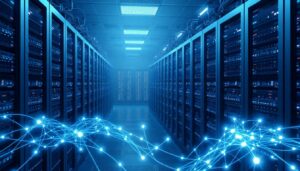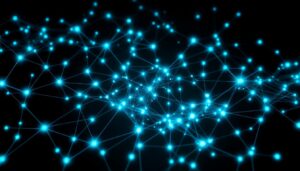What if cars could drive themselves? Doctors make medical diagnoses with mind-blowing accuracy. This isn’t science fiction. It’s the reality that computer vision is creating.
So computer vision is a subfield of Artificial Intelligence. Computers can “see” and understand images — just like we do. It is growing in importance.” The intent here is to expose you to the kind of algorithms it employs and the applications it has. We will also explore what lies ahead in this area.
13 Core Computer Vision Algorithms
Peeking into the engines of computer vision These are the building blocks of those algorithms. They allow machines to interpret and understand images.

Image Classification
But ever notice how your phone knows if a picture is of a cat or a dog? That’s the magic of image classification. It is the ability to teach computers how to categorize images.
Convolutional neural networks (CNN) play an important role. They learn relevant representations from the images. CNNs can be pictured as different layers. Which is exactly what we do, convolutional layers extract features. Pooling layers reduce the data. The final decision is made through fully connected layers.
Other CNN architectures which are also popular. ResNet is a very deep network. Well, then comes Inception, which is good at feature extraction. VGGNet is preferred because of simplicity. All these aid with various photo problems.
Object Detection
So what is the difference between Object detection and classification? It sheds not only what objects reside in a picture. But it also finds out where they are. This is how self-driving cars are able to find pedestrians and other vehicles.

Examples of these fast algorithms are YOLO (You Only Look Once). Faster R-CNN offers improved accuracy. For example: In object detection a bounding box is a concept used. They are boxes that define the limits of each object. Intersection over union (IoU) measures how well the predicted box overlaps with the actual box. Non-maximum suppression(NMS) eliminates duplicate detections. This way only the best detections are stored.
Image Segmentation
Image segmentation goes a step further than object detection. It segments an image into distinct regions. Each region is then labeled. Semantic: -Labels each pixel Instance segmentation individual object segmentation
Semantic Segmentation: Deep Fully Convolutional Networks (FCNs) U-Nets architectures are the standard of care in medical images. This enables physicians to focus on certain items in the images. It’s also needed for autonomous driving, when separating road from sidewalk, for example.
Use Cases in Different Industries
Theoretical ability is not the same as capability. It’s transforming industries in significant ways. Now, let’s look where it is a difference maker.
Healthcare
Computer vision is a game changer in the healthcare domain. It’s applied within medical imaging analysis. This can detect tumors early. It can also speed up the diagnosis of diseases. Surgery in robots has better visibility. Cameras can be used to monitor patients more efficiently.
Tools powered by computer vision are already assisting doctors. They make diagnosis faster and more accurate.” And this improves outcomes for patients.
Automotive
There is much talk about self-driving cars. Their core operation is computer vision. The technology allows for things like object detection, lane keeping and traffic sign recognition.
Computer vision allows the car to “see” what’s around it. There are still challenges ahead, but progress is being made all the time. What it actually does is enhance autonomous navigation.
Retail
Computer vision: Pathways to better retail operations Automation is also becoming a reality in inventory management. Automated systems are speeding up checkout. Using customer behavior analytics can also inform shopping behavior insights.

Retailers are employing computer vision to monitor inventory. This reduces theft, too. Others are harnessing it to tailor the shopping experience.
Manufacturing
Computer vision increases efficiency and quality in manufacturing. Utilized for quality control and also defect detection. Predictive maintenance can detect issues before they lead to failures.
Computer vision automates the processes. It reduces errors. It results in a better quality end product at lower prices.
Challenges and Limitations
Computer vision is powerful. It’s critical to understand its limits, however.
Data Dependency
Abundant data is required for computer vision models. The data used needs to be good quality data, too. That amount of data can be quite a challenge.
There’s also the matter of data bias. If the data is not diverse, the model may fit poorly to everyone. Real world has to have mean — this is shown in a dataset.
Computational Resources
As computer vision algorithms provide a vast amount of data, processing them takes a lot of computational power. To be trained, these models need time. It requires powerful GPUs and specialized hardware.
Demand for computational resources can be a barrier. That makes it difficult for smaller organizations to participate.
Explainability and Trust
Deep-learning models can be “black boxes.” They seem inscrutable in their decision-making process. That lack of transparency can be an issue.
Trust in computer vision is a necessary building block. Especially in mission-critical applications such as healthcare. People have to learn how these systems work. This way, everyone can trust the results.
Future Trends
Computer vision is constantly evolving. Here are some trends to track

Advancements in Deep Learning
Deep learning is evolving. You’re taking new architecture. Transformers perform well on sequential data. These are actual ontological and causal relationships clearly modeled — graph neural networks are responsible for this. Self-supervised learning is capable of learning from both labeled and unlabeled data.
These innovations increase the precision of models for computer vision. These models are becoming increasingly efficient as well.
Edge Computing
That’s what edge computing is — it’s processing data as close to where it’s collected as possible. Which means running computer Vision algorithms on devices such as smartphones and cameras.
It increases amletency with edge computing It increases privacy. It improves scalability. All of these are big wins.
AI and Computer Vision
The Future of AI and Computer vision Which new algorithms could improve CV? AI will enable CV systems to learn and adapt to a new situation. Computer vision will allow AI systems to visually interpret the world.
Conclusion
Computer vision is altering our cadence with technology. The essence of it’s potential lies within its algorithms. And it’s revolutionizing industries from health care to retail.
There are hurdles to clear. Computer vision is what it is and the future is bright! It’s set to have a massive impact on society.



